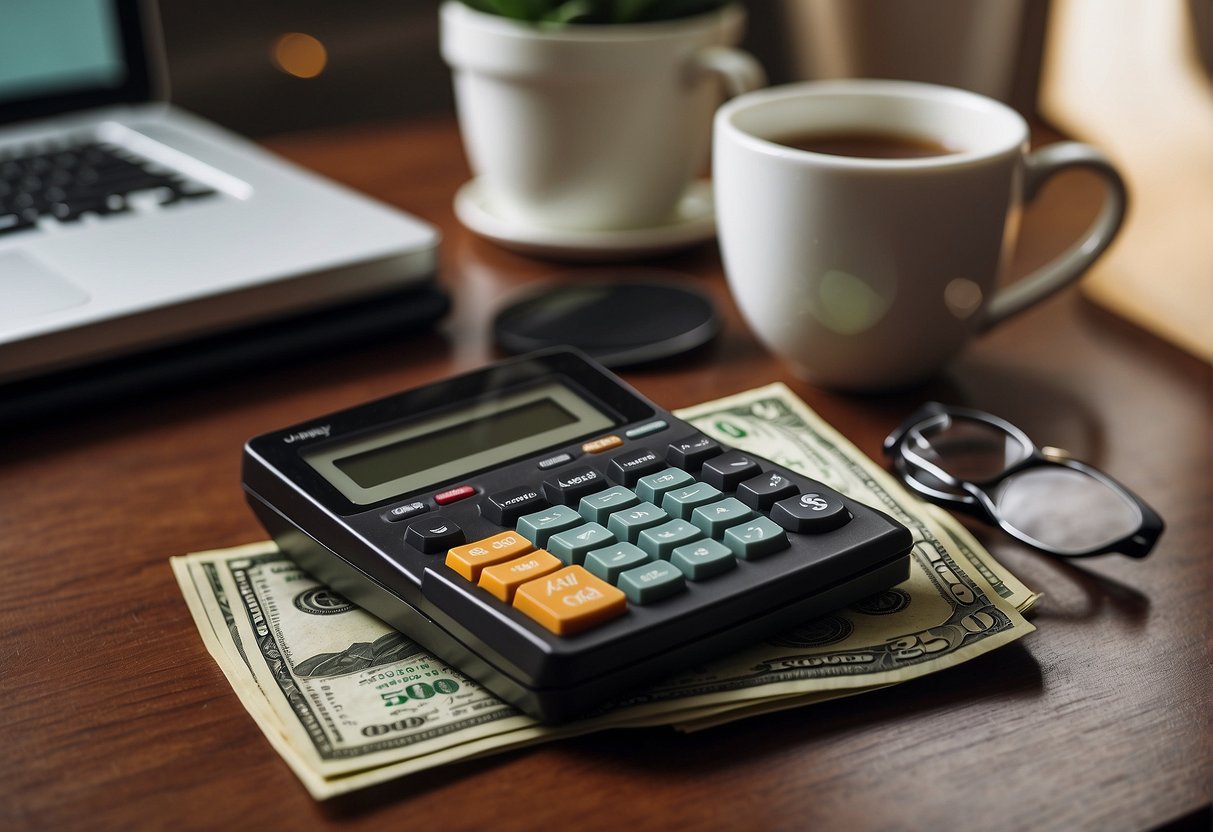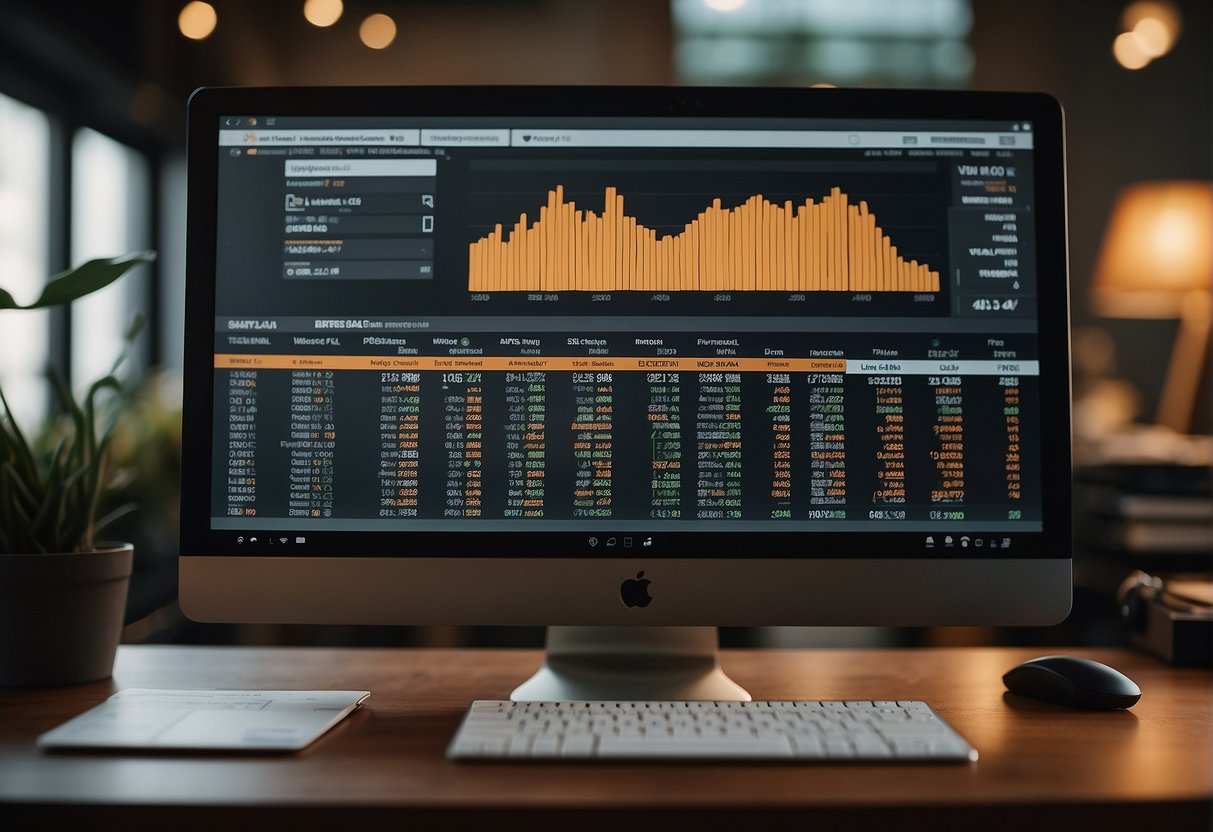As an Etsy seller, understanding the platform’s fee structure is crucial to managing your business and revenue. Etsy applies several fees, which typically include a listing fee, a transaction fee, and a payment processing fee. When you list an item on the Etsy marketplace, you are charged a nominal fee. This fee ensures your product is active on the site for a set duration or until the item sells.
On each sale you make, Etsy takes a percentage as a transaction fee. This cost is calculated based on the price you display for each listing, plus the amount you charge for shipping and gift wrapping. In addition to these fees, when you make a sale through Etsy’s payment system, there’s a payment processing fee, which varies by country and is based on the total sale price, including shipping and taxes.
Managing your shop’s expenses effectively involves accounting for these fees in your pricing strategy. This ensures that your creative enterprise on Etsy remains profitable while you provide unique handmade products or craft supplies to a global audience of buyers. It’s important to keep abreast of any changes in Etsy’s fee policies to maintain the financial health of your online storefront.
Understanding Etsy’s Fee Structure
Navigating Etsy’s fee structure is crucial for effectively managing your shop’s finances. Understand that various fees will apply throughout the selling process, impacting the overall amount you’ll earn per sale.
Listing Fees
For every item you list on Etsy, a $0.20 listing fee is charged. This fee applies regardless of the number of items you have or whether they sell. Keep in mind that these Etsy listing fees are automatically renewed every four months, so inactive or unsold listings will continue to incur costs.
Transaction Fees
Etsy takes a 5% transaction fee on the sale price (including the shipping cost set by you). If you sell a $20 item with $5 shipping, Etsy’s transaction fees would amount to $1.25.
Payment Processing Fees
These fees vary by country and are charged for the processing of payments through Etsy Payments. You’ll encounter a payment processing fee that is calculated based on the total sale, including tax and shipping fee. For example, in the US, the fee is 3% + $0.25 per transaction.
Shipping and Other Transactional Fees
In addition to a shipping fee that you set and collect from your buyer, Etsy also charges a shipping transaction fee. This is calculated as 5% of the shipping cost you display. If your shipping is $5, the shipping transaction fee would be $0.25. Keep this in mind when setting your shipping prices to ensure you’re covering your costs.
Etsy Payments and Currency Conversion
When selling or purchasing on Etsy, it’s essential to understand the fees associated with transactions. Etsy Payments is the primary way you’ll handle money on the platform, and dealing with different currencies will introduce additional costs to be aware of in the form of currency conversion fees.

Etsy Payments
Etsy Payments is the main payment processing service used on Etsy, allowing buyers to pay with various payment methods, which sellers receive in their payment account. To facilitate transactions, Etsy charges payment processing fees, which are a percentage of the total sale price including shipping and tax, plus a fixed fee per order, deducted from your payment account.
- Payment Processing Fees (Varies by country):
- Percent of total sale price: 3% – 5% (typically; check Etsy’s site for your country’s rate)
- Fixed fee per order:
$0.25–$0.35(typically)
These fees are automatically deducted, so you won’t have to manually pay them, but they will affect your net earnings.
Currency Conversion Fees
If you’re dealing with international transactions or listing your items in a different currency than your payment account, a currency conversion fee will be applied to convert the payment to your local currency.
- Currency Conversion Fee: 2.5% above the daily exchange rate
This fee is applied every time a currency conversion is required. When listing products or setting up your shop, ensure to consider these costs when pricing items to maintain profitability.
Additional Seller Fees and Services

As an Etsy seller, it’s important for you to understand the various additional fees and services that may affect your shop’s finances. These are beyond the basic transaction and listing fees and cover advertising costs, subscription services, and processing fees for optional services that can help you manage your shop more effectively and increase your sales.
Advertising Fees
When opting into Etsy’s advertising services, you’ll encounter different fees. Etsy Ads allow you to promote your listings within the Etsy search platform, with costs determined by a pay-per-click model. The fees for these ads are variable and depend on your budget and the number of clicks your ads receive.
Offsite Ads can significantly broaden your reach by displaying your products on various platforms outside of Etsy. Etsy charges a fee for this service, which is a percentage of the sale price of items sold through Offsite Ads, and it’s mandatory for shops with over $10,000 in sales.
Subscription Services
Etsy offers subscription packages such as Etsy Plus. This comes with additional tools and credits for shop promotion and customization. Etsy Plus charges a monthly subscription fee, which provides benefits such as restock requests, advanced shop customization, and credits towards Etsy Ads and Etsy’s own domain service called Pattern.
Pattern allows you to build a custom website for your brand, charged at a flat fee per month after a free trial, not including the Etsy Pattern fee. It’s optional and integrates directly with your Etsy shop.
Processing Fees for Optional Services
Etsy also charges processing fees for optional services that could help elevate your shop’s presentation. For example, gift wrapping services can be offered to buyers for an additional charge, from which Etsy takes a percentage fee.
There might also be fees for services like auto-renew of expired listings—think of it as a convenience fee to keep your listings active without manual re-listing. Multi-quantity listing fees may apply if you’re selling multiple quantities of the same item in a single listing.
Keep in mind that when utilizing Etsy Payments, separate Etsy Payments fees apply, depending on the country of your bank.
Etsy’s Financial Considerations for Sellers

When selling on Etsy, it’s crucial to understand how the platform’s fees impact your profit margins and how to manage your business finances effectively.
Understanding Profit Margins
On Etsy, you’re dealing with various costs that eat into your profits. Each time a transaction occurs, Etsy takes a commission known as a transaction fee which is 6.5% of the sale price. This does not include shipping costs or sales tax. Additionally, a standard payment processing fee applies, which varies by country. Listing an item on Etsy will cost you $0.20 per listing. These costs must be factored into your profit margin to ensure you understand the real per sale profits.
Managing Business Finances
Your finances on Etsy include more than just the fees per transaction. Consider the cost of materials, time, labor, and overhead like insurance, which are all integral to your business’s financial health. Create a detailed spreadsheet or use accounting software to track these expenses versus your sales to maintain a clear view of your profits. This active financial management helps you make informed decisions for your Etsy business’s future. Remember, a well-planned financial strategy often results in greater profitability.
Navigating Regulatory Fees and Taxes
When running an Etsy shop, it’s important to understand the fees and taxes that affect your profit. Etsy imposes various charges, including transaction fees, and your shop will also be subject to VAT and sales taxes depending on location, as well as potential regulatory operating fees.
VAT and Sales Taxes
Value-Added Tax (VAT): If you’re selling to customers within the EU, you may need to charge VAT on your sales. The rate varies by country, and Etsy will automatically calculate and collect it on your behalf for digital items.
- For physical items, you should set your prices to include VAT where applicable.
- Etsy issues a VAT invoice to buyers on your behalf for each sale.
Sales Tax: In the United States, sales tax applies to most physical goods and some digital services, with rates that vary by state, county, and city.
- Etsy automatically calculates, collects, and remits sales tax for orders shipped to states where this is required.
- For states where Etsy does not handle sales tax, you may need to calculate and add it to your item price, then pay it to the appropriate tax authority.
Regulatory Operating Fees
Marketplace Facilitator Laws: Due to these laws, Etsy may collect and remit sales tax on your behalf in applicable regions.
- Always check with your local tax authority to understand your specific obligations regarding these sales taxes and regulatory fees.
- Keep in mind that while regulatory fees often pass through the platform, you are ultimately responsible for your shop’s compliance with tax laws.
Etsy Fees: Etsy charges a 5% transaction fee on the sale price, including the shipping cost set by you. If you accept payments through Etsy Payments, there are additional processing fees.
- These fees can be considered as part of your operating costs.
- Diligent record-keeping of these transactions will assist with your annual tax filing and financial planning.
Promotion and Marketing on Etsy
To succeed on Etsy, it’s essential to understand the nuances of promotion and marketing. Proper use of Etsy’s unique tools can increase your shop’s visibility and drive more sales.
Utilizing Etsy Ads for Visibility
Etsy Ads are a powerful way to boost your shop’s exposure. When you invest in Promoted Listings, your items appear prominently in search results, capturing potential buyers’ attention. To start, set a daily budget that suits your financial plan. Etsy Ads automatically optimize your bids, ensuring your products reach interested shoppers without complex bid management.
Search Engine Optimization Strategies
SEO (Search Engine Optimization) is crucial for your listings to rank higher in both Etsy and external search engine searches. Use relevant and specific keywords for your products and include them in your titles, tags, and descriptions. This approach aligns with Etsy’s search algorithm and can increase organic traffic. Crafting comprehensive, keyword-rich product listings enhances your visibility on-site and leads to more natural discovery.
Leveraging Marketing Tools
Etsy offers a suite of marketing tools designed to help sellers connect with their audience. Utilize Etsy’s own onsite ads to appear in strategic locations across the platform, or harness the power of social media integration to share your products. Email campaigns, sales and coupons, and Etsy’s social media integration all serve to extend your reach and cultivate customer loyalty. Use these tools wisely to communicate your brand story and engage with your customers effectively.
A Closer Look at Specialty Fees
When you sell on Etsy, understanding the variety of fees, especially for handmade and vintage items, is critical to managing your business. Depending on how you conduct sales, different fees may apply.
Fees for Selling Handmade and Vintage
If you’re a US seller on Etsy, there’s a standard fee structure you need to be aware of for your handmade and vintage items. For every item you list, Etsy charges a $0.20 listing fee, which allows your product to stay on the marketplace for four months or until it sells, whichever comes first. Once you make a sale, there is a 5% transaction fee on the sale price (including the shipping cost set by you). Additionally, if you use Etsy Payments, a payment processing fee is also deducted.
- Listing Fee: $0.20 per item
- Transaction Fee: 5% of total sale price
- Payment Processing Fee: Varies by country
Be mindful that although these fees contribute to the visibility and potential reach of your products, they will impact your overall profit margins.
Transaction Fees for In-Person Sales
If you participate in in-person selling, such as selling your handmade or vintage items at a craft fair or a physical storefront, you still incur fees through Etsy’s platform. The in-person selling fee is different from online transactions. Etsy charges a transaction fee of 2.5% per sale when you use Etsy’s card reader or manually enter the credit card information within the Sell on Etsy app.
- In-Person Transaction Fee: 2.5% per sale
Remember that these fees are in place to simplify the transaction process for you as a seller, providing security and ease for both you and your buyers during in-person exchanges.
Frequently Asked Questions
Navigating Etsy fees is essential for your success as a seller. This section breaks down the costs so you can manage your shop’s finances effectively.
What is the percentage commission does Etsy charge per sale?
Etsy takes a 5% commission fee on the sale price (including the shipping cost set by you).
Is there a monthly fee for selling on Etsy, and how much is it?
There is no monthly fee to maintain a standard shop on Etsy, allowing you to list products and interact with customers.
How do you calculate the fees for selling items on Etsy?
To calculate your Etsy fees, combine the listing fee, commission fee, and payment processing fee. Make use of Etsy’s fee calculator tools for an exact breakdown.
When and how often does Etsy bill for charges incurred?
Etsy issues a monthly statement and automatically deducts fees from your sale earnings. If your sales don’t cover the fees, you’re billed at the end of the month.
Are there any non-obvious fees that sellers should be aware of on Etsy?
Be mindful of costs such as currency conversion, advertising fees, and transaction fees for using Etsy Payments, which vary by bank and country.
For a sale of $100, how much will Etsy deduct in fees?
On a $100 sale, Etsy would deduct a 5% commission ($5), along with a 3% plus a $0.25 payment processing fee (totaling $3.25). This does not include the listing fee or any other possible fees.



